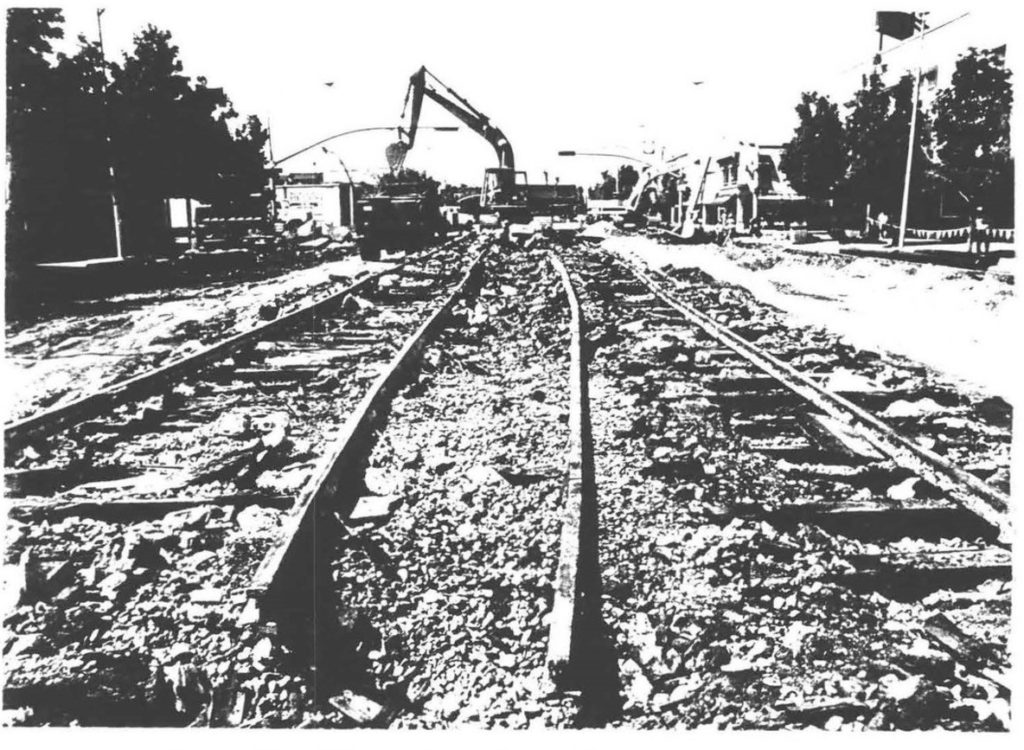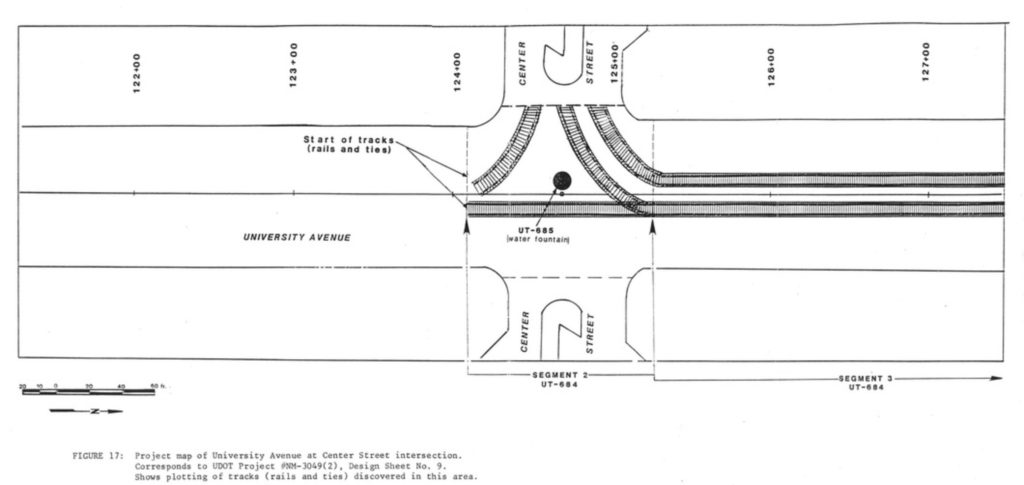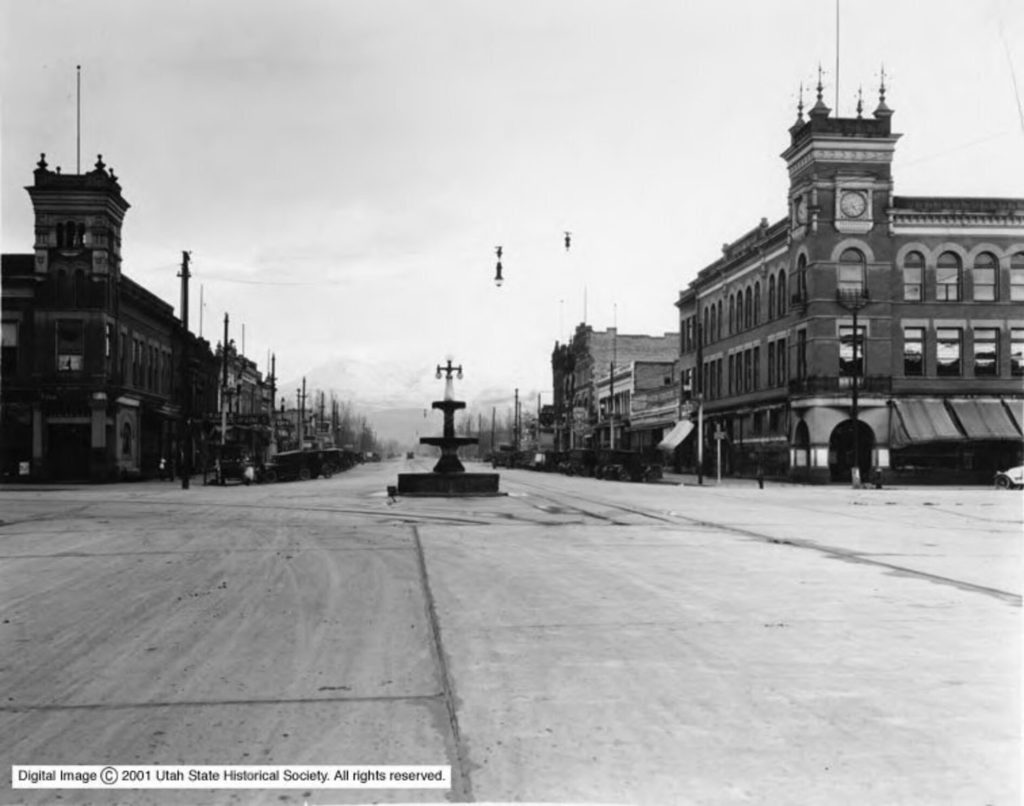Chris Merritt, Utah State Historic Preservation Officer

Delving into Utah’s urban landscape, it is not uncommon whatsoever for new transportation projects, including TRAX lines and road improvements, to encounter the physical remains of previous periods of people-moving efforts in Utah’s urban areas. Old streetcar lines criss-crossed Ogden, Salt Lake and Provo for decades before the everyday Utahn switched their preferred mode of transportation to personal automobiles and buses. By the 1960s, many of these early streetcar lines had been paved over, leaving crossties and even steel rail in place.
Fast forward to the post-2000 push for Utahns to use more mass transit to avoid traffic congestion and improve our air quality, and now new street cars constructions are hitting old streetcar lines.
A decade earlier, however, improvements in downtown Provo encountered the extensive remains of the city’s passenger trolleys. As early as 1889, steam powered locomotives moved people along University and Center Avenue in Provo (though that first attempt died in 1892 due to poor patronage). A second, and more successful effort was the Salt Lake and Utah Interurban electric railroad that ran 67 miles from Salt Lake to Payson (which was finally reached in 1916), and used the same University Avenue corridor in Provo as the earlier effort. After nearly 35 years of operation, the railroad finally succumbed to the post-World War 2 changing modes of transportation and was formally abandoned in 1946.

After 43 more years, the Utah Department of Transportation rediscovered the long-forgotten remains of the streetcar line when the agency undertook a multi-year effort to rebuild University Avenue including new curb and gutter. Archaeologists with the Office of Public Archaeology at Brigham Young University documented three separate areas of exposed trolley tracks encountered by the construction crews.
One of the unique finds was the foundation for an iconic, troublesome, and ultimately short-lived foundation in the intersection of University Avenue and Center Street. Inside the ‘wye’ or curved sections of track in the intersection, fundraisers paid $600 for a new fountain to be constructed to beautify this important location. With fanfare on April 25, 1917, the fountain was turned on and included red, white, and blue electric lights. According to Provo’s Daily Herald, “This fountain is one of the best and most artistic in the state. The workmanship…by R. T. Woodard…was all done by hand.” (Daily Herald April 26, 1917).


Sadly, as more automobiles were arriving on the streets of Provo in the 1920s and 1930s, conflicts occurred between these new vehicles and the streetcars and the fountain itself. Due to the height and location of the fountain, it allegedly obscured the view for drivers turning through the intersection. By 1930, a large editorial was posted in the Daily Herald calling for the City to remove the fountain, as it is “felt among automobile owners that the fountain is becoming an unnecessary impediment with the increase of traffic at the busiest places in the city,” and “in sub-freezing weather when overflowing water forms a shining ice rink on which drives play hide and seek” (Daily Herald January 16, 1930). In the next few years after this editorial, the fountain was removed, but apparently, as documented by archaeologists, the foundation remained and was buried.

References
Christensen, Teri H.
1990 Historical Overview of the Former Electric Interurban System in Provo, Utah County, Utah. Report prepared by Office of Public Archaeology, for Utah Department of Transportation.
